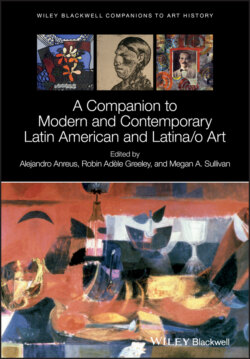Читать книгу A Companion to Modern and Contemporary Latin American and Latina/o Art - Группа авторов - Страница 64
Notes
Оглавление1 1 Here I follow Slavoj Zizek's formulation regarding the constitution of power, starting with Ernesto Laclau and Alain Badiou, as inhabited by a “leap between the Particular and the Universal void, which needs the operation of hegemony.” The function of filling that void is fulfilled by ideology. Zizek, S. (1999). The Ticklish Subject. The Absent Centre of Political Ontology, pp. 173–184. London‐New York: Verso.
2 2 This is the expression that Carlos Chávez, director of the Instituto Nacional de Bellas Artes y Literatura (INBAL; the National Institute of Fine Arts and Literature) uses in a letter to Tamayo regarding the selection of Mexican art to be sent to Paris in 1951. Cited in Suckaer, I. (2000). Rufino Tamayo. Aproximaciones, p. 222. Mexico City: Editorial Praxis.
3 3 Siqueiros, art section, Tiempo, Mexico, 30 June 1950. Cited in Suckaer, op. cit., p. 207.
4 4 Tamayo, R. (1950). “El gangsterismo en la pintura mexicana,” Excelsior, 14 November, cited in Rufino Tamayo. Berlin: Staatliche Kunsthalle, 1990, p. 171.
5 5 Toward 1978, Paz would speak insightfully of Siqueiros as an “animist” convinced that matter was alive and creative. See “RE/Visiones,” 1987b, p. 275.
6 6 Here I paraphrase Paz’s language in “Transfiguraciones,” México en la obra de Octavio Paz. III. Los privilegios de la vista, op. cit. p. 362.
7 7 Again, Paz thinks that this is Tamayo’s attitude: “to be close to the origins.” And he points out: “It is one of the privileges, among so many disadvantages, of being born in an underdeveloped country.” (“Transfiguración,” El signo y garabato, Ibid., p. 176).
8 8 I thank Dawn Ades for calling my attention to the fact that Paz was the first author to do an iconographic reading of Duchamp.
